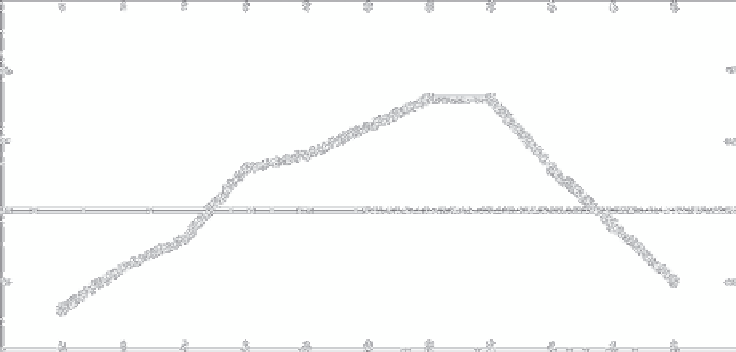Agriculture Reference
In-Depth Information
35
30
Start of minor and
main season harvests
25
20
Start of hunger gap
15
10
Jan.
Feb.
Mar.
Apr.
May.
Jun.
Jul.
Aug.
Sep.
Oct.
Nov.
FIGURE 8.3
Monthly trends of global acute malnutrition prevalence in northern Bahr el Ghazal
state, South Sudan (source: Woldetsadik, 2011).
and medicine, pollination, fuel and air purification. Replacing these natural services with
technology-based functions greatly increase the need for substantial investments in infrastruc-
ture and robust institutions to support it. Research looking at nutrition outcomes and dietary
diversity that explicitly includes information on environmental change while controlling for
variations in food production caused by the weather should be interesting to explore here.
However, because of the enormous number of reasons for poor health of any one individual,
including personal history, income, ethnic affiliation, education, personality and political
isolation, identifying these connections will be difficult.
A study by Johnson
et al
. (2013) brings together datasets on forest change from satellites
and child dietary diversity, nutrition status and illness (diarrhea) in Malawi. The hypothesis
that was being tested with this study was that degraded environments, as proxied by deforesta-
tion and low percentage of forest cover in Malawi, result in degraded ecosystem services,
which then open pathways to child undernutrition and consequently poor health. Con-
versely, the report hypothesized that intact environments, as represented by higher percent-
ages of forest cover and protected areas, will have comparatively better capacity to provide
essential ecosystem services, which then translate into improved human nutrition and health
outcomes.
If the existence of a causal relationship between forest cover and improved health status is
hypothesized, then using household surveys and remote sensing data is a way of testing the
relationships. There is a clear selection that goes into where people end up living, and the
poorest/worse-off may end up living in areas with less forest cover because these are undesir-
able places to live. However, forest cover characteristics may have nothing to do with why
they are in poor health but is simply associated with places where poor people live. Exploring
these relationships is of interest, however.
To conduct the analysis, the report linked satellite remote sensing data and GIS-based
information on proximity to conservation areas to population and health data from Malawi.
The association between child health and nutrition outcomes and proxies for biodiversity

Search WWH ::

Custom Search